Power Electronics in Renewable Energy Systems Explained
Category: Renewable Energy
Unlocking the Power of Electronics in Renewables
Power electronics play a pivotal role in transforming the raw energy captured from renewable sources like wind and solar into usable, stable electricity. Whether you're a curious beginner trying to understand how wind turbines and solar panels deliver power to your home, or an electrical engineer seeking deeper insights into the latest innovations in converters, inverters, and control strategies, this post is designed for you. We recognize that the complex jargon and intricate systems of power electronics can feel overwhelming and disconnected from practical applications. This article cuts through the noise, offering a clear, structured exploration that bridges theory and real-world implementation.
You might have arrived here searching for answers on how power electronics enhance efficiency, reliability, and integration of renewable energy systems, or how emerging technologies like wide-bandgap semiconductors and grid-support features optimize performance. Unlike typical technical overviews, our approach balances fundamental concepts with practical examples and recent advances, enabling both novices and seasoned professionals to grasp the transformative science powering the green energy revolution. Dive in to demystify the core elements and emerge equipped to understand and appreciate the innovation steering a sustainable future.
- Unlocking the Power of Electronics in Renewables
- Introduction to Power Electronics in Renewable Energy
- Core Components and Devices in Power Electronics
- Wind Energy Systems and Power Electronics
- Solar Photovoltaic Systems and Power Electronics
- Emerging Renewable Technologies and Power Electronics
- Grid Integration and Stability
- Energy Storage and Hybrid Systems: Optimizing Energy Flow and Reliability with Power Electronics
- Control Strategies and Digital Innovations: Enhancing Responsiveness and Performance in Renewable Power Electronics
- Reliability, Efficiency, and Thermal Management in Power Electronics for Renewable Energy Systems
- Future Trends and Research Directions in Power Electronics for Renewable Energy Systems
Introduction to Power Electronics in Renewable Energy
At its core, power electronics refers to the technology that converts and controls electrical power using semiconductor devices, enabling the efficient transformation of electrical energy from one form to another. In the context of renewable energy systems, power electronics serve as the essential interface that bridges the variable, often unpredictable output of energy sources like wind turbines and solar panels with the stable, usable electricity needed for homes, businesses, and the electrical grid.
Unlike conventional power generation, renewable sources produce electricity that fluctuates in voltage and frequency due to changing environmental conditions—like sunlight intensity or wind speed. Here, power electronic converters and controllers play a fundamental role by:
- Converting variable DC or AC output from renewable generators into a stable, grid-compatible AC voltage and frequency.
- Regulating power flow and voltage levels to maximize energy extraction and system efficiency.
- Protecting system components by managing surges, faults, and variations inherent to renewable generation.
- Enabling advanced functionalities such as grid support, reactive power compensation, and energy storage integration.
By harnessing fast-switching semiconductors like IGBTs and MOSFETs, power electronics enable precise, real-time control over electrical parameters, making renewable energy not only feasible but also reliable and efficient within modern power grids. This seamless power management is what allows wind farms and solar arrays to supply consistent, clean energy regardless of fluctuating environmental input—a cornerstone of the global transition to sustainable energy.
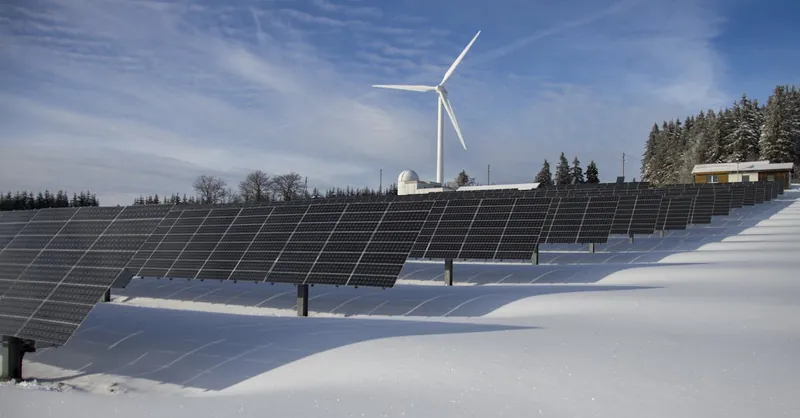
Image courtesy of Pixabay
Core Components and Devices in Power Electronics
At the heart of renewable energy systems are several key power electronic devices that govern the efficient conversion and control of electrical energy. Understanding these components is crucial for both beginners and professionals aiming to optimize renewable power generation and grid integration.
Converters and Rectifiers
Converters are devices that change electrical energy from one form to another—most commonly between AC (alternating current) and DC (direct current). In solar photovoltaic (PV) systems, for instance, the output is direct current, which must be converted to alternating current for grid use. This is where rectifiers and DC-DC converters come into play:
- Rectifiers convert AC from the grid or wind turbines into DC to charge batteries or feed DC components.
- DC-DC Converters (such as buck, boost, or buck-boost converters) adjust the voltage level of DC power, optimizing solar panel output or battery charging.
Inverters: The Crucial Interface
One of the most critical components is the inverter, which transforms DC electricity from solar panels or batteries into grid-compatible AC electricity. Modern inverters not only convert power but also provide advanced features such as:
- Maximum Power Point Tracking (MPPT): Ensures solar panels operate at peak efficiency.
- Grid synchronization: Matches voltage, frequency, and phase with the utility grid.
- Reactive power control and voltage support: Enhances grid stability and power quality.
Controllers and Protection Devices
All these power conversions are coordinated by controllers—sophisticated electronics that monitor and regulate current, voltage, and switching sequences to maximize efficiency and protect components. Controllers ensure devices operate safely under variable renewables conditions, managing:
- Surge protection
- Fault detection and isolation
- Load balancing and power factor correction
Emerging Semiconductor Technologies: Silicon Carbide and Gallium Nitride
Recent advances have introduced wide-bandgap semiconductor materials like silicon carbide (SiC) and gallium nitride (GaN) into power electronics, revolutionizing device performance:
- Silicon Carbide (SiC): Offers higher voltage withstand capabilities, greater thermal conductivity, and faster switching speeds than traditional silicon, enabling smaller, more efficient converters and inverters ideal for high-power wind turbines and utility-scale solar plants.
- Gallium Nitride (GaN): Particularly effective in high-frequency, lower-voltage applications, GaN devices reduce switching losses dramatically, supporting compact designs in residential and commercial solar inverters.
By integrating these wide-bandgap devices, renewable energy systems achieve higher power density, improved efficiency, and enhanced reliability—crucial for scaling clean energy solutions worldwide.
Together, these core components and semiconductor innovations form the backbone of modern power electronics, enabling renewable energy to meet the demands of today’s dynamic and complex power grids.
Image courtesy of Lukas
Wind Energy Systems and Power Electronics
Wind energy systems present unique challenges due to the inherently variable nature of wind speeds, requiring sophisticated power electronics to efficiently convert and control electrical output. Power electronics in wind turbines manage this variability by continuously adjusting generator operation, turbine blade pitch, and grid interfacing to ensure optimal energy capture and reliable power delivery.
Managing Variable Wind Speeds and Pitch Control
Wind speeds fluctuate constantly, impacting the mechanical power captured by turbine blades. Power electronic converters play a key role in adapting to these changes by:
- Controlling generator speed: Power electronic interfaces allow variable-speed operation of wind turbines, maximizing energy extraction across a wide range of wind conditions rather than relying on fixed-speed generators.
- Enabling pitch control systems: Pitch controllers adjust the angle of turbine blades to regulate aerodynamic torque and prevent mechanical stress or overspeeding under high winds. Power electronics process sensor inputs and execute rapid pitch adjustments with precision.
This dynamic control ensures consistent electrical output and protects turbine components, while optimizing energy capture and extending equipment lifespan.
Grid Connection and Converter Topologies in Wind Turbines
Integrating wind energy into the power grid requires converting the turbine's variable-frequency AC or DC power into a stable AC supply synchronized with grid voltage and frequency. Several power electronic converter topologies are commonly used in modern wind turbines to achieve this:
- Back-to-Back Converters: These consist of a generator-side converter (usually a rectifier) converting variable-frequency AC to DC, and a grid-side inverter converting DC to fixed-frequency AC, enabling full control over active and reactive power flow.
- Multi-Level Converters: Employed in high-power applications, these converters provide better voltage quality with lower harmonic distortion, improving grid compliance and efficiency.
- Direct-Drive Converters: Used with gearless turbines, these converters handle low-speed generator output and convert directly to grid-compatible power, simplifying mechanical design and lowering maintenance.
Through these power electronic systems, wind turbines can:
- Synchronize precisely with grid demands
- Provide ancillary grid services like voltage regulation and reactive power support
- Enhance fault ride-through capabilities to maintain grid stability during disturbances
Power electronics thus act as the intelligence hub of wind energy systems, transforming fluctuating mechanical energy into clean, constant electrical power while enabling seamless grid integration and robust performance under dynamic wind conditions.

Image courtesy of Amol Mande
Solar Photovoltaic Systems and Power Electronics
Solar photovoltaic (PV) systems rely heavily on advanced power electronics to maximize energy harvest, convert DC electricity generated by solar panels into grid-compatible AC power, and ensure seamless integration with the electrical grid. Three key power electronic functions underpin efficient and reliable solar energy utilization: Maximum Power Point Tracking (MPPT), inverter operation, and grid synchronization technologies.
Maximum Power Point Tracking (MPPT)
The output power of a solar panel varies with sunlight intensity, temperature, and load conditions. MPPT algorithms embedded in power electronic controllers constantly adjust the operating voltage and current to extract the maximum possible power from the PV array at any moment. By dynamically matching the load to the ideal operating point, MPPT significantly boosts the overall efficiency and energy yield of solar systems—sometimes by 20-30% compared to fixed operating points.
Common MPPT techniques include:
- Perturb and Observe (P&O): Continuously perturbs voltage and measures output power, adjusting toward the maximum point.
- Incremental Conductance: Compares incremental changes in current and voltage to track the power peak more accurately under rapidly changing conditions.
- Constant Voltage: Uses a fixed reference voltage approximating the maximum power point, simpler but less adaptive.
Inverter Functions in Solar Systems
At the heart of solar power conversion, inverters perform several critical roles beyond DC-to-AC conversion:
- Voltage and frequency regulation: Ensure output matches grid standards, maintaining stable and clean sinusoidal waveforms.
- Harmonic distortion minimization: Reduce electrical noise to prevent adverse effects on sensitive loads and grid equipment.
- Reactive power control: Help manage voltage levels on the grid, improving power quality and resisting voltage sags.
- Island detection and anti-islanding protection: Detect grid outages to safely disconnect the solar system, protecting utility workers and equipment.
Modern string inverters and central inverters incorporate sophisticated control electronics to simultaneously perform these functions while maximizing system reliability and lifespan. Emerging hybrid inverters additionally support energy storage integration, enabling more flexible solar power utilization.
Grid Synchronization Technologies
For solar photovoltaics to feed power into the utility grid, inverters must synchronize output voltage, frequency, and phase angle with the grid signal precisely. This synchronization is facilitated by power electronic control systems using phase-locked loops (PLLs) and fast switching electronics to:
- Match the phase and frequency of the grid to ensure smooth power flow without disturbances.
- Modulate real and reactive power flow to support grid voltage stability and power factor correction.
- Provide grid ancillary services such as voltage ride-through capability and fault support during transient conditions.
Advanced grid synchronization also involves compliance with evolving grid codes and standards, which require solar inverters to dynamically respond to grid events to maintain overall system stability and security.
By combining MPPT optimization, robust inverter functionality, and precise grid synchronization, power electronics empower solar PV systems to operate at peak efficiency while enabling safe, reliable, and intelligent integration into modern electrical grids. This plays a critical role in scaling solar energy as a cornerstone of global renewable energy infrastructure.

Image courtesy of Kelly
Emerging Renewable Technologies and Power Electronics
As the renewable energy landscape expands beyond wind and solar, emerging technologies such as tidal, wave, and geothermal power systems are gaining traction for their potential to provide consistent, clean energy. Power electronics play a transformative role in these innovative systems by optimizing energy conversion, enhancing efficiency, and ensuring seamless grid integration.
Tidal and Wave Energy Systems
Tidal and wave energy converters harness the predictable motion of ocean currents and surface waves. However, these marine renewables face challenges such as highly variable mechanical input forces and harsh operating environments. Advanced power electronic converters are essential for adapting fluctuating mechanical power into stable electrical output. Key contributions include:
- Dynamic power conditioning: Power electronics modulate and stabilize the irregular voltage and current generated from underwater turbines or oscillating water columns.
- Bidirectional converter capability: This allows energy flow control in systems combining tidal generation with energy storage or grid services.
- Grid compatibility and synchronization: Specialized inverters ensure that ocean-generated power matches grid voltage, frequency, and phase, complying with stringent marine renewable grid codes.
By enabling precise control and fault tolerance, power electronics enhance the reliability and output quality of tidal and wave energy, accelerating their deployment in coastal energy systems.
Geothermal Power Systems
Geothermal energy provides baseload power by tapping heat stored beneath the Earth’s surface, often producing a mixture of steam and hot water that drives turbines. Power electronics optimize geothermal systems primarily by:
- Managing variable steam conditions: Converters adjust to fluctuating pressure and flow rates to maintain stable generator operation.
- Enhancing grid interface: Power electronic inverters regulate power quality and support reactive power compensation, vital for integrating geothermal plants with existing grids.
- Supporting hybrid system configurations: Power electronics enable combined geothermal and renewable hybrid plants incorporating battery storage or solar arrays, maximizing overall system efficiency.
The integration of advanced power electronic converters, along with real-time control algorithms, positions geothermal power as a reliable, sustainable energy source with improved grid responsiveness and operational flexibility.
Through continuous innovation in power electronic devices and control strategies, emerging renewable technologies overcome their inherent intermittency and variability challenges. This not only boosts energy conversion efficiency but also ensures stable, grid-compliant electricity delivery—paving the way for a diverse and resilient renewable energy future.

Image courtesy of Lisa from Pexels
Grid Integration and Stability
Integrating renewable energy sources like wind, solar, and emerging technologies into the existing power grid presents significant challenges related to variability, grid stability, and power quality. Unlike traditional power plants that provide predictable and controllable power output, renewable generators produce fluctuating voltage and frequency due to changes in environmental conditions. This intermittency can cause grid voltage instability, frequency deviations, and power quality issues such as harmonic distortion and reactive power imbalances.
Power electronics serve as the frontline solution to these challenges by offering sophisticated control over electrical parameters, enabling renewables to actively support the grid rather than merely injecting power passively. Key grid support functionalities provided by power electronic converters include:
- Voltage Regulation: Power electronic devices adjust the output voltage dynamically to maintain grid voltage within acceptable limits, compensating for voltage sags, swells, or dips caused by fluctuating renewable generation.
- Reactive Power Compensation: Through advanced inverter control, renewable energy systems can inject or absorb reactive power, helping maintain power factor close to unity. This capability reduces transmission losses and supports voltage stability, a crucial factor especially in weak or rural grids.
- Grid Support and Ancillary Services: Modern converters offer functionalities like low-voltage ride-through (LVRT) and frequency support, allowing renewable plants to remain connected and contribute to grid stability during faults or disturbances. They can also provide synthetic inertia and fast frequency response, mimicking conventional spinning generators.
By integrating these capabilities, power electronics transform renewable energy systems into active grid participants, enhancing overall grid reliability and enabling higher penetration levels of clean energy. This synergy between power electronics and grid infrastructure is pivotal in advancing smart grids and fostering a resilient, sustainable energy future.
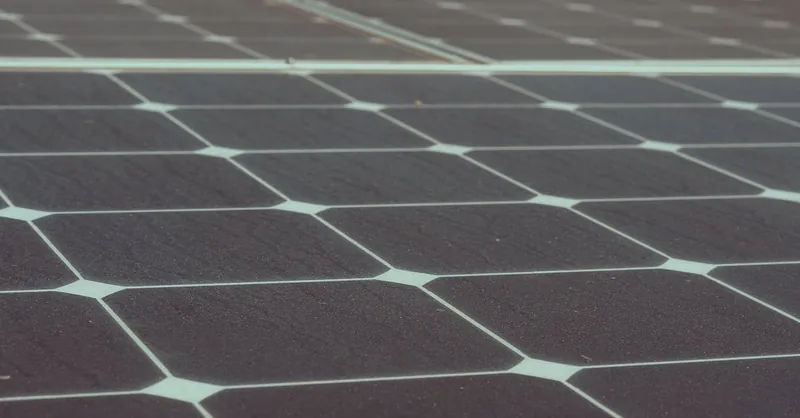
Image courtesy of Kindel Media
Energy Storage and Hybrid Systems: Optimizing Energy Flow and Reliability with Power Electronics
The integration of energy storage systems (ESS) such as batteries and the development of hybrid renewable energy systems are revolutionizing the way we manage renewable power generation and consumption. Power electronics act as the critical enabler in these setups, providing dynamic control over energy flow, maximizing system reliability, and enhancing the overall efficiency of renewable installations.
Role of Power Electronics in Battery Energy Storage Systems (BESS)
Battery energy storage systems store excess renewable energy generated during peak production and discharge it when generation is low or demand spikes. Power electronic converters perform several vital functions in BESS, including:
- Bidirectional power conversion: Inverters coupled with DC-DC converters facilitate both charging (AC to DC) and discharging (DC to AC), enabling smooth energy transfer between batteries and the grid or loads.
- State-of-charge management: Power electronics continuously monitor and regulate battery voltage and current to optimize charging cycles, extend battery lifespan, and prevent overcharge or deep discharge conditions.
- Grid support services: Through advanced inverter controls, stored energy can be dispatched rapidly to provide frequency regulation, peak shaving, load leveling, and voltage support, enhancing grid stability and increasing renewable penetration.
Power Electronics in Hybrid Renewable Energy Systems
Hybrid systems combine multiple renewable sources (e.g., solar plus wind) with or without energy storage to overcome the intermittency challenges inherent to single-source installations. Power electronics in hybrid configurations achieve optimal energy management through:
- Adaptive power routing: Intelligent converters dynamically balance power flows between different generation units and storage devices based on resource availability and demand patterns.
- Seamless system coordination: Centralized or distributed controller architectures manage converter operations to ensure smooth transitions and maintain power quality even as resource inputs fluctuate.
- Enhanced reliability and resilience: Hybrid systems supported by robust power electronic interfaces improve overall system uptime, provide backup power capabilities, and enable microgrid functionality in remote or off-grid applications.
By precisely managing energy conversion, distribution, and storage, power electronics empower hybrid renewable energy systems to deliver reliable, high-quality power consistently—even under variable environmental conditions. This integration is essential for achieving higher renewable energy penetration, lowering dependence on fossil fuels, and advancing smart grid technologies that accommodate diverse, distributed energy resources.
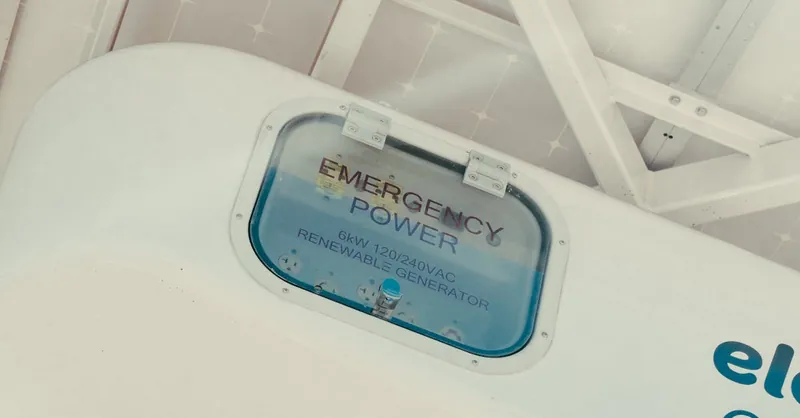
Image courtesy of Kindel Media
Control Strategies and Digital Innovations: Enhancing Responsiveness and Performance in Renewable Power Electronics
As renewable energy systems evolve, advanced control strategies and cutting-edge digital innovations are transforming power electronics into intelligent, adaptive platforms that significantly improve system responsiveness, efficiency, and reliability. These technological breakthroughs enable renewable installations to operate optimally under variable environmental conditions while supporting grid stability and resilience.
Advanced Control Algorithms
Modern renewable power electronics leverage sophisticated control algorithms such as model predictive control (MPC), adaptive control, and artificial intelligence-based techniques to dynamically optimize converter and inverter operation. These algorithms enable:
- Real-time adjustment of switching patterns to minimize power losses and harmonic distortion.
- Fast transient response to rapidly changing input conditions, such as sudden wind gusts or cloud cover.
- Fault detection and self-healing capabilities, enhancing system reliability by isolating and correcting anomalies before they escalate.
- Multi-objective optimization, balancing maximum power extraction, grid support functionalities, and thermal management.
By embedding these intelligent control schemes, power electronics systems achieve higher energy conversion efficiency, improved power quality, and enhanced system longevity.
Intelligent Inverters
The next generation of inverters incorporates intelligent functionalities that extend beyond traditional power conversion:
- Grid-interactive features such as dynamic reactive power support, voltage ride-through, and frequency regulation.
- Predictive maintenance through embedded sensors and machine learning models that forecast component degradation.
- Communication and interoperability with smart grid infrastructure, enabling demand response and distributed energy resource management.
- Adaptive MPPT algorithms tailored for fluctuating conditions and partial shading scenarios in solar PV.
These intelligent inverters serve as the digital brain of renewable systems, fostering seamless integration with modern grid architectures and enabling proactive energy management.
Digital Twins and Simulation-Based Optimization
Digital twin technology—virtual replicas of physical renewable energy systems—allows engineers to simulate, monitor, and optimize power electronics performance throughout the system lifecycle. Key benefits include:
- Predictive analytics to anticipate performance bottlenecks and guide maintenance schedules.
- Design validation and testing under varying scenarios without risking real equipment.
- Optimization of control parameters to maximize efficiency and grid compliance before field deployment.
- Enhanced cybersecurity assessments preventing vulnerabilities in interconnected power electronics devices.
The integration of digital twins with IoT and cloud platforms accelerates innovation cycles and empowers data-driven decision-making, ensuring renewable systems adapt swiftly to evolving grid demands.
By combining advanced control algorithms, intelligent inverter technologies, and digital twin-driven insights, power electronics in renewable energy systems achieve unprecedented levels of performance, reliability, and grid compatibility. This synergy is critical for enabling the smart, flexible, and scalable renewable infrastructures that will drive the global energy transition forward.
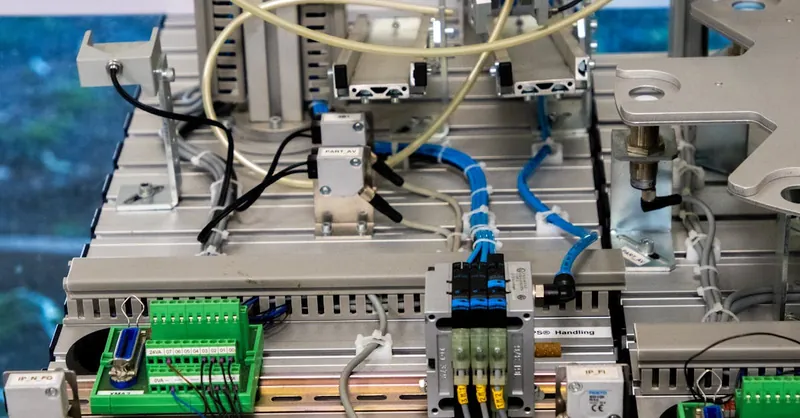
Image courtesy of Ludovic Delot
Reliability, Efficiency, and Thermal Management in Power Electronics for Renewable Energy Systems
Ensuring reliability, maximizing energy efficiency, and effectively managing thermal dissipation are critical design considerations in power electronic devices used within renewable energy systems. These factors directly impact the durability, performance, and lifespan of converters, inverters, and controllers—key components subjected to continuous electrical and environmental stresses.
Enhancing Reliability through Robust Design
Power electronic devices in renewable applications must withstand harsh operating conditions including voltage surges, temperature fluctuations, mechanical vibrations, and moisture exposure. To enhance reliability:
- Robust Component Selection: Use of high-quality semiconductors such as SiC and GaN devices that exhibit superior voltage tolerance, resistance to electrical overstress, and reduced failure rates.
- Redundant Architectures: Incorporation of redundant converter modules or parallel device arrangements to maintain operation despite partial failures.
- Protective Circuitry: Integration of fault detection, overcurrent protection, and safe shutdown mechanisms to prevent cascading damage during anomalies.
These approaches minimize downtime and maintenance costs, ensuring renewable systems deliver consistent power over extended service periods.
Maximizing Energy Efficiency
Efficiency is paramount in renewable power electronics to translate variable energy inputs into usable grid power with minimal losses. Key strategies include:
- Optimized Switching Techniques: Employing advanced modulation schemes (e.g., space vector PWM) and wide-bandgap semiconductors to reduce switching and conduction losses.
- Adaptive Control Algorithms: Dynamically adjusting switching frequency and duty cycles based on load and environmental conditions to maximize conversion efficiency.
- Minimizing Harmonics: Designing converters with low total harmonic distortion (THD) to reduce energy wasted in filters and prevent grid disturbances.
Higher efficiency not only increases the energy harvested from renewable sources but also lowers thermal stress and cooling requirements.
Advanced Thermal Management Solutions
Power electronic devices generate heat during operation, and inadequate thermal management can lead to accelerated aging, reduced reliability, and catastrophic failures. Effective heat dissipation techniques include:
- Thermal Interface Materials (TIMs): High-conductivity materials between semiconductor dies and heat sinks improve thermal transfer.
- Heat Sinks and Cooling Systems: Use of optimized heat sink designs combined with forced air cooling, liquid cooling, or phase-change cooling to maintain device temperatures within safe limits.
- Thermal Monitoring and Control: Embedded temperature sensors and real-time thermal management algorithms prevent overheating by adjusting operating parameters or initiating protective shutdowns.
Optimizing thermal management extends component life, reduces the frequency of maintenance, and ensures stable performance under varying load and environmental stresses.
By prioritizing reliability, efficiency, and thermal control in power electronic design, renewable energy systems achieve durable, high-performance operation essential for the large-scale deployment and long-term sustainability of wind, solar, and emerging clean energy technologies.
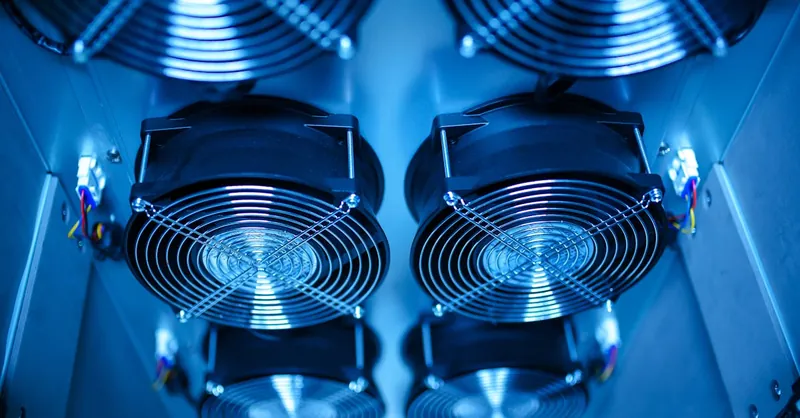
Image courtesy of panumas nikhomkhai
Future Trends and Research Directions in Power Electronics for Renewable Energy Systems
The future of power electronics in renewable energy systems is poised for transformative breakthroughs that will further enhance efficiency, reliability, and grid integration capabilities. Pioneering technologies such as wide-bandgap (WBG) semiconductors, solid-state transformers (SSTs), and artificial intelligence (AI)-driven control systems are leading this advancement, addressing the limitations of conventional silicon-based devices and enabling smarter, more adaptable renewable energy infrastructures.
Wide-Bandgap Semiconductor Advances: Silicon Carbide and Gallium Nitride
Building on the promising foundations of SiC and GaN technologies, ongoing research focuses on pushing the limits of these wide-bandgap semiconductor devices to achieve even higher power densities, switching frequencies, and thermal efficiency. Key future directions include:
- Next-generation SiC power modules that support megawatt-scale renewable energy converters with enhanced ruggedness and reduced cooling requirements.
- GaN-based high-frequency converters enabling ultra-compact, lightweight inverters for residential and commercial PV systems with minimal switching losses.
- Integration of SiC and GaN with advanced packaging techniques to lower parasitic inductances, enabling faster switching speeds and improved electromagnetic compatibility (EMC).
These improvements will dramatically reduce size, cost, and energy losses in converters and inverters, accelerating the adoption of renewables globally while facilitating compact, modular designs for distributed energy resources.
Solid-State Transformers: The Next-Generation Grid Interface
Solid-state transformers (SSTs) represent a revolutionary shift from traditional electromagnetic transformers by using advanced power electronics to provide highly flexible and intelligent voltage conversion and grid interfacing. Key benefits and research focuses include:
- Bidirectional power flow capability, supporting integration with energy storage and distributed generation in smart grids.
- Voltage regulation and isolation with high-frequency operation, enabling smaller, lighter transformer hardware.
- Advanced protection and fault management functions embedded within SSTs for enhanced grid resilience.
- Multifunctionality, including power quality improvement, harmonic filtering, and seamless adaptation to varying generation sources.
As SSTs mature, they are expected to enable microgrids, electric vehicle (EV) integration, and renewable systems with unprecedented efficiency and control, unlocking new paradigms in grid modernization and decarbonization.
AI-Driven Control and Predictive Maintenance
Artificial intelligence and machine learning are transforming the landscape of renewable power electronics control by introducing adaptive, predictive, and autonomous functionalities that optimize operational performance in real time. Key developments include:
- AI-based MPPT algorithms that dynamically adapt to rapidly changing irradiance and partial shading conditions, surpassing traditional heuristic methods.
- Predictive fault detection and diagnosis leveraging sensor data and machine learning models to forecast device degradation, enabling proactive maintenance and reducing downtime.
- Real-time adaptive control of converters and inverters to maximize energy harvest while providing advanced grid support services such as voltage and frequency regulation.
- Integration with IoT and cloud platforms for centralized data analytics and remote system optimization across distributed renewable assets.
By embracing AI-driven control strategies, renewable power electronics will become more intelligent, resilient, and efficient—able to autonomously adjust to evolving grid conditions and user demands, ultimately enhancing the stability and sustainability of future energy networks.
The convergence of wide-bandgap semiconductor innovations, solid-state transformer technologies, and AI-enabled control systems marks the frontier of power electronics research. These emerging breakthroughs promise to revolutionize renewable energy integration by enabling faster, smarter, and more robust electric power conversion and management, supporting the global transition to a cleaner, more reliable energy future.
Image courtesy of Kelly
